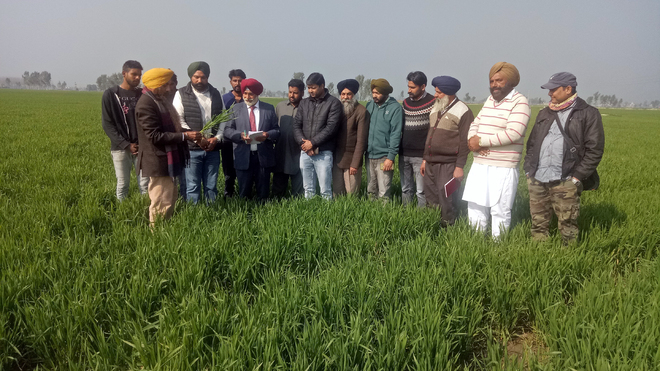In a recent field survey by the Agriculture Department, it was found that wheat sown directly with the help of super seeder and mould bold plough after mulching it is by and large a healthy way here and in the adjoining districts of the Malwa belt. This way one doesn’t have to burn paddy stubble.
The pH of the soil is a measure to test the acidity and alkalinity in the soil. The pH range between 7 and 8 is considered optimal for most crops. Amandeep said despite using best fertilisers, he was not satisfied with the output. On the advice of an agriculture expert, he ploughed the paddy straw into the soil. “I will attribute the reason for a good crop yield to my doing away with the practice of burning the paddy stubble for the last couple of years,” he said.
Swaran Singh and Manohar Singh, both farmers of Rode village, said the soil in their agricultural land had surplus nutrients now, as they had refrained from burning the paddy stubble, and reduced the urea dose to half.
The farmers claimed earlier they would get an output of 17 or 18 quintals per acre, however, now they say, it has increased by 3 quintals.
According to the field survey, the crops yield was likely to cross the mark of 20 quintals per acre. In some fields, given there is normal and favourable weather conditions, the crop yield could be between 22 and 24 quintals per acre, said Dr Brar.
Meanwhile, Dr Kahan Singh Pannu, Secretary of the Agriculture Department, has urged the farmers to make optimum use of subsidised agro-machinery to refrain from burning the straw.
This news has not been edited by Apni Kheti staff but has been published by various news feeds
Source: Tribune India

